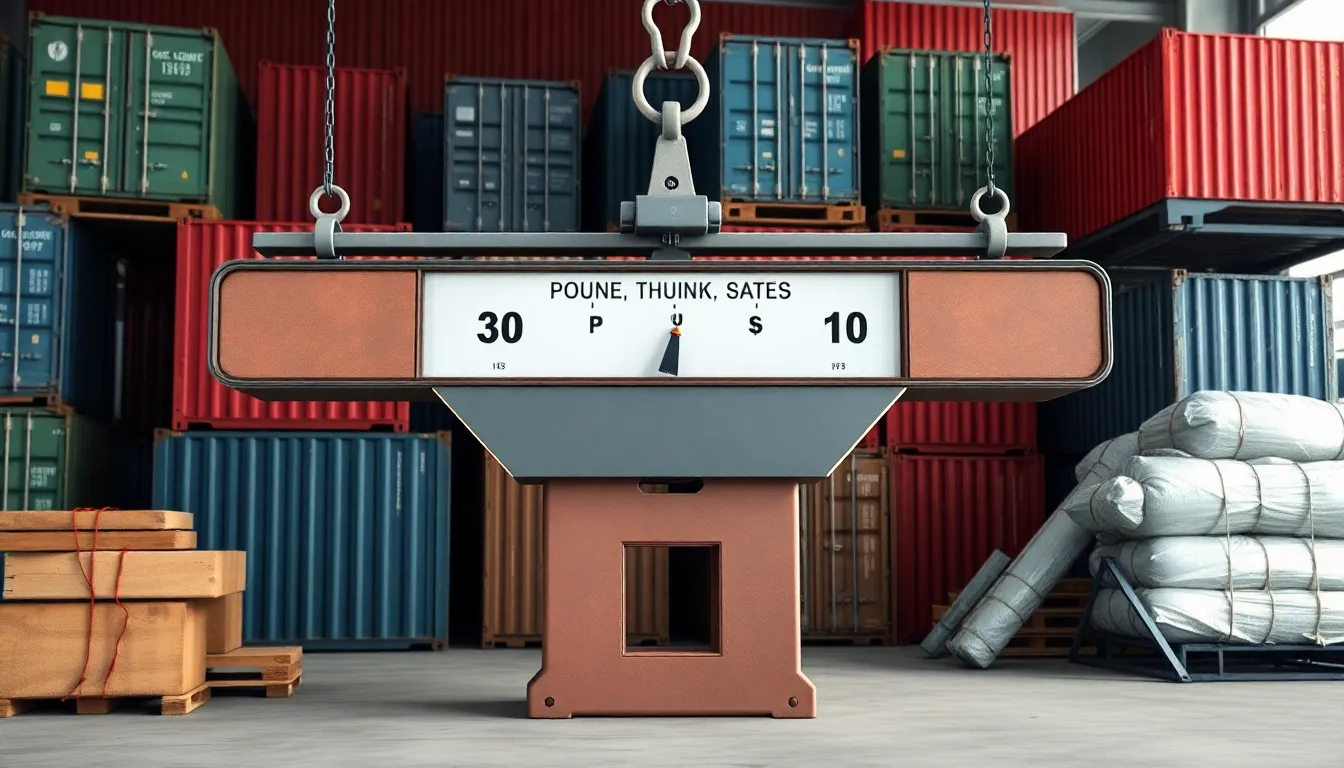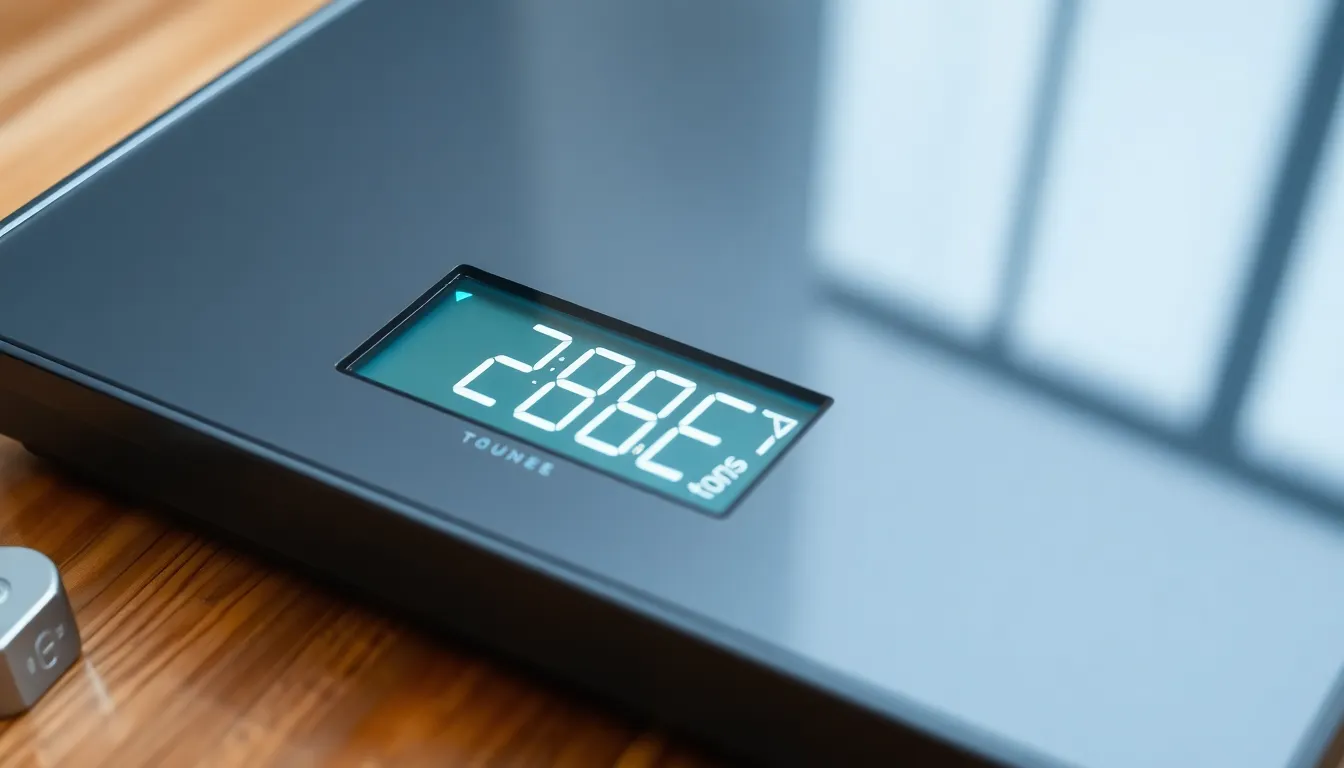Ever found yourself scratching your head over the difference between a ton and a pound? You’re not alone! It’s one of those quirky math puzzles that can turn even the most seasoned number crunchers into befuddled mathematicians. But don’t worry, he isn’t alone in this weighty dilemma.
Table of Contents
ToggleUnderstanding Weight Measurements
Confusion arises often when discussing weight measurements, particularly between tons and pounds. One ton equals 2,000 pounds in the United States customary system. Various contexts use this measurement, including shipping, construction, and aviation.
Units of measurement differ globally; the metric ton, or tonne, stands at 1,000 kilograms, which converts to approximately 2,204.62 pounds. This distinction is crucial for international transactions. Countries like the UK might use the long ton, equating to 2,240 pounds.
Familiarity with these units benefits individuals in practical situations. Calculating weight accurately helps in areas such as logistics and storage. Many people overlook the specific types of tons when measuring weight, leading to errors in estimates.
Reference tables are useful for quick conversions. For instance:
| Unit Type | Equivalent in Pounds |
|---|---|
| Short Ton | 2,000 lbs |
| Long Ton | 2,240 lbs |
| Metric Ton | 2,204.62 lbs |
Conversions vary based on location and usage, making it essential to know the context. Clarity in these definitions often resolves misconceptions. Remembering these facts fosters better understanding and helps navigate weight-related discussions accurately.
The Conversion Between Tons and Pounds

Understanding the conversion between tons and pounds clarifies common measurement challenges. It’s crucial to grasp these distinctions for accurate calculations in various fields.
What Is a Ton?
A ton refers to a unit of weight measurement. In the United States customary system, it equals 2,000 pounds. This system widely supports industries like shipping and construction, where heavy freight weighs in tons. A metric ton, also known as a tonne, represents 1,000 kilograms, approximately 2,204.62 pounds. The long ton, predominantly used in the UK, weighs 2,240 pounds. Each type of ton serves specific applications, highlighting the importance of context in weight measurements.
What Is a Pound?
A pound is a base unit of weight in the imperial system. Specifically, it measures 16 ounces. This unit plays a significant role in daily life, covering everything from groceries to physical fitness. With pounds being customary in the United States, individuals often relate to this measurement in personal contexts. The pound also finds uses in various industries, where it remains essential for calculating weight and shipping costs. Many systems incorporate pounds due to their practicality and familiarity.
Different Types of Tons
Understanding types of tons clarifies weight measurements across various fields. Variations exist, each with distinct values and applications.
Metric Ton
A metric ton, also known as a tonne, equals 1,000 kilograms. This conversion translates to approximately 2,204.62 pounds. Utilized primarily in countries using the metric system, the metric ton simplifies international trade and scientific calculations. Adoption of this unit is widespread among industries like shipping and transportation. Precision in measurements using the metric ton is vital for accurate logistics.
Short Ton
A short ton is equal to 2,000 pounds and is commonly used in the United States. This measurement is often encountered in industries such as construction and manufacturing. Conversions for the short ton are straightforward, ensuring easy calculations for professionals. Awareness of the short ton helps prevent confusion when dealing with domestic weight measurements. Familiarity with this unit enhances effective communication among those in shipping and other sectors.
Long Ton
A long ton, or imperial ton, consists of 2,240 pounds in the United Kingdom. Often used in shipping and heavy industry, this measurement can create confusion when comparing with other ton types. The long ton helps understand historical contexts and standards in British regulations. Recognizing this variation proves beneficial for navigating different regional applications. Industries rely on accurate ton classifications, making knowledge of the long ton essential.
Practical Applications of Ton to Pound Conversion
Understanding ton to pound conversion plays a vital role in various aspects of daily life and industry practices. Accurate conversions enhance operational efficiency and avoid calculation errors.
Everyday Scenarios
In household settings, knowing how many pounds are in a ton can simplify weight-related tasks. Grocery shopping might require one to calculate a ton of food products in pounds for meal planning. Similarly, outdoor activities like moving bulk materials require understanding weight limits. Yard work involving soil and mulch often sees measurements in tons, making conversions essential for purchasing and delivery decisions. Recreational boaters might need to determine vessel weight limits, ensuring safety while enjoying time on the water.
Industry Applications
Industry professionals frequently rely on ton to pound conversions for precise measurements in construction and shipping. Construction projects use short tons to calculate material weight, affecting costs and structure integrity. Shipping companies often convert tons to pounds to ensure freight meets legal requirements for transport. Logistics planning requires accurate weight data to optimize storage space and manage cargo effectively. In aviation, weight limits directly influence passenger safety, necessitating exact conversions for luggage and cargo loads. Understanding tons in relation to pounds thus supports seamless operations across various sectors.
Grasping the difference between tons and pounds is vital for anyone involved in industries that rely on accurate weight measurements. Whether it’s in shipping construction or everyday tasks understanding these units can prevent costly errors and enhance efficiency.
Familiarity with the various types of tons—short tons long tons and metric tons—enables clearer communication and better decision-making. As readers navigate weight-related discussions they’ll find that this knowledge not only simplifies their tasks but also supports smoother operations across multiple sectors.



